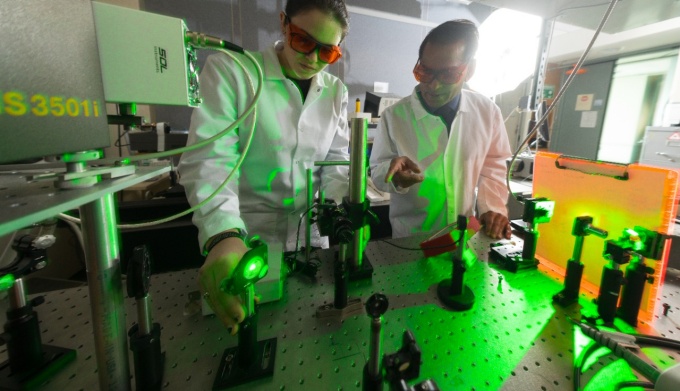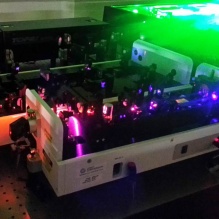Spectroscopy

Linear and non-linear interactions between radiation and matter are used to peek into the atomic- and molecular-level structure and dynamics of solids, liquids and gases and the interfaces between them.
Spectroscopy Research at UB
Theory and experiment converge in this area to provide elemental, structural and dynamical properties of molecules, clusters and nanostructures in light of the quantum-mechanical descriptions of matter. Research groups in the department use several spectroscopy and computational techniques for structure and property determination of inorganic complexes, biological macromolecules and biological and polymeric films. Groups apply and develop spectroscopic methods for the structure/function analysis of nanostructured materials, including tip-enhanced Raman spectroscopy. Time-resolved capabilities in the department allow for reactivity, molecular reorientation and energy and charge transfer studies to be carried out in timescales ranging from a few femtoseconds to hours in order to provide a detailed understanding of chemical transformations.
Lasers are used by several groups in the department to study the evolution of excited states in surface molecules, single crystals and nanostructured materials providing an understanding of elementary processes in solar energy conversion, chemiluminescence and nanomedicine.
Affiliated Faculty

